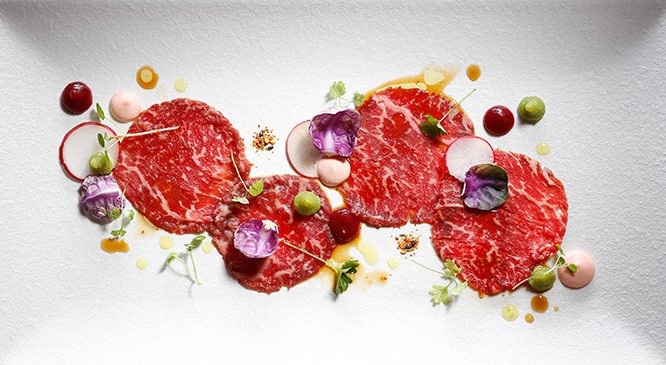We’ve mentioned before that Wagyu was tabbed as a trend to watch this year. Not only was it a top ingredient in the annual National Restaurant Association “What’s Hot” survey, Datassential’s Menu Trends database rates Wagyu as “On Fire” — the top rating on its trend scale. We chatted up our favorite trends maven, Menu Matters’ Maeve Webster to get her take on the luxury meat phenomenon.

AMM: You’ve been monitoring the rise of Wagyu for some time now — what have you gleaned so far about what’s driving Wagyu’s success?
MW: One of the most powerful learnings is that Wagyu universally impresses, even if the consumer or guest doesn’t really understand it. “Expensive for a reason” is probably a good term for it. At the high end, it’s a special occasion star for business dinners, or anyone that wants to treat themselves or impress someone. They trust restaurants to source and cook it properly, much more than cooking it at home.
At the lower end, where you see Wagyu show up in burgers and chain restaurants, it’s more about the “little upgrade” you can get at a much more approachable price point. Consumers are still using foodservice heavily, and have the means for these affordable luxuries when they do.
Any surprises in your research so far?
It definitely stood out that across the board, even among Wagyu consumers and professionals, people don’t have a great grasp of what Wagyu is or means. They tend to understand that it’s a premium product, but don’t really know why. Those same consumers didn’t know what “prime” meant, either! Lots of room for operators to show the way.
Where are you seeing foodservice operators have success with Wagyu?
MW: In a luxury steak or fine dining environment, Wagyu flights from different origins are a really smart play. Guests are looking to trial and sample Wagyu and be educated, and you can showcase your expertise (and still retain some margin) with those tasting-style portions. Another smart approach is to use it in applications where the Wagyu is more of an accent or condiment. The overall dish might be more plant-forward or read “healthier,” but you’ve got this luxury element of Wagyu beef that resonates with the guest that wants to make their red meat count.
At the other end of the spectrum, Wagyu in everyday applications like burgers makes good sense too, particularly if you’re prepared to be transparent about what you’re using and where it comes from. It’s still worth a premium, it’s differentiating, and you can appeal to a much broader audience.
Where does Aussie Wagyu fit in?
MW: Because of the limited availability of Wagyu from Japan and the US, Australia is in a great position to meet the demand for Wagyu here in North America. They’ve got great access to pure genetics, robust export programs and structures, and decades of experience producing high-quality red meat for a global market. Those tasting flights at the steakhouse and fine dining are steadily educating consumers that Australia is a prime place of origin for Wagyu, too. And most importantly, they have the supply!
Thanks Maeve! For a chefs’ take on Wagyu in North America, follow the link here.

